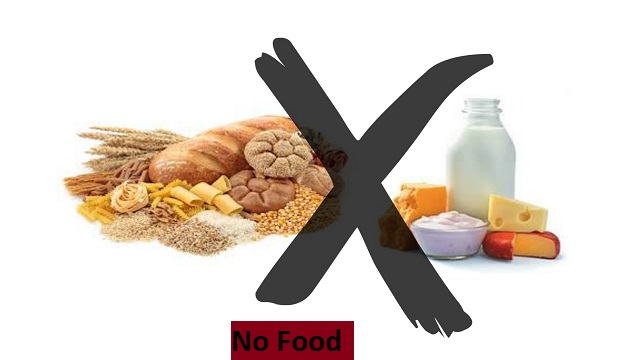
What is Migraine?
Migraines are not to be taken lightly. They are available in numerous shapes, styles, and outcomes. Here are 5 foods that you should try to cut out of your diet if you suffer from migraines. Foods can either be a source of health or a source of disease, depending on the situation.
Recurrent incapacitating headache attacks and other symptoms are typically used to diagnose or characterize migraines, a frequent chronic disorder. The comorbid diseases depression, epilepsy, stroke, and myocardial infarction are frequently present in people with chronic, incapacitating migraines.
Some Foods That Can Cause A Migraine.
It’s crucial to realize that the food you eat can have a positive or negative impact on the onset or relief of a migraine attack if you regularly suffer from them. Although there is a dearth of high-quality randomized controlled trial data on dietary patterns or dietary triggers, we do advise eliminating (or limiting) the following foods from your diet completely if you experience any negative side effects.
Alcohol.
If you suffer from recurrent or incapacitating migraines, alcohol should absolutely not be consumed. Beer and red wine, in particular, can quickly start a migraine, and while your body is processing and eliminating the alcohol, this can frequently delay the relief of a migraine (making it last longer than it would without alcohol in the system).
In retrospective studies, only 10% of migraine patients reported alcohol as a frequent this trigger; however, about one-third of migraine patients reported alcohol as a migraine trigger, at least occasionally. There have been reports of regional variations, possibly influenced in part by drinking habits.
Caffeine.
Only 10% of migraine patients reported alcohol as a migraine trigger frequently in retrospective studies, but about one-third of migraine patients reported alcohol as a migraine trigger, at least occasionally. There have been reports of regional variations, possibly influenced by drinking patterns. That said, we did discover that while caffeine has been linked to migraines for a long time, its effect on headaches is unclear when we dug deeper to find the research supporting the claim that it is a food that triggers a migraine.
While drinking coffee or an energy drink before an attack may be due to yawning, low energy, or sleepiness that may indicate a headache, it may be difficult to distinguish between migraine triggers and premonitory symptoms. Furthermore, no compelling research has been done to support the claim that caffeine can cause migraines. Contrarily, caffeine has been proven to be both safe and effective in the treatment of acute migraines, whether taken alone or in combination with other medications.
There are numerous ways that caffeine may affect migraines, but it mostly works by antagonistically interacting with the adenosine receptor, which leads to increased vasoconstriction and decreased CBF. Despite the association between caffeine and migraines, a larger prospective study based on electronic diaries should be carried out to fully evaluate the relationship.
Foods high in fat.
High levels of free fatty acids and blood lipids are two of the most significant factors thought to play a role in causing migraine headaches, according to recent studies and literature. This implies that the more processed and unnecessarily fatty foods you eat and the more unhealthy and overweight you are, the worse off you’re going to be.
In one study, 54 people with previously diagnosed this headaches participated in a 12-week study with the goal of evaluating the effect of dietary fat intake on the severity of migraine headaches.
The study participants kept a headache diary and kept a diet diary during the first 28 days, recording all food consumption.
After this 28-day baseline period, each subject received individualized advice to keep their daily fat intake to no more than 20 g. The low-fat diet was given a 28-day run-in period to allow for adaptation. Results are presented for the last 28 days following the intervention. Between baseline (mean 65.9 g/day, p 0.0001) and the postintervention period (mean 27.8 g/day), subjects significantly reduced their intake of dietary fat in grams.
There were statistically significant reductions in headache frequency, intensity, duration, and medication use (all p 0.0001) following the intervention that reduced dietary fat intake. An important positive correlation (r = .44, p = 0.02) was found between the amount of dietary fat consumed at baseline and the frequency of headaches. This study shows that eating a low-fat diet can lower the frequency, severity, and duration of headaches as well as the need for medication.
High-processed foods.
Before we criticize carbohydrates, let’s be clear that not all carbohydrates are created equal. When it comes to highly processed foods, the hydrogenated oil (fat) and the simple sugars are typically what cause a migraine. These two ingredients are heavily processed, foreign to the body, and can lead to inflammation, blood sugar spikes and crashes, obesity, unneeded weight gain, and, you guessed it, migraines.
Despite the fact that there isn’t much evidence to back up this claim either, we still advise cutting back on added sugar (including natural and artificial sweeteners) while incorporating more anti-inflammatory, whole foods into your diet.
Learn more about “good carbs” and how to include more of them in your diet before eliminating all carbohydrates and labeling them as the bad guy food that causes migraines. This will help you avoid becoming dependent on highly processed foods as a source of energy. Consider whole foods such as fruits, vegetables, lean proteins, and omega-3-rich fats.
Nitrites as well as nitrates.
The most common use of nitrates and nitrites in food is to stabilize processed meat and cheese so that it won’t mold and spoil the same day that you buy it (sodium nitrite, potassium nitrite, and sodium nitrate are all listed as E249. Due to the fact that most of our food must travel great distances and take a long time to reach our mouths and refrigerators, this food additive has been revolutionary in assisting food stability, but it can also be harmful to people when used frequently and in high doses.
There are some health risks related to dietary nitrate intake. About 60–70% of these compounds are quickly excreted in urine after ingestion, with ease. In humans, urea and ammonia make up about 3% of the nitrate in urine.
High nitrate and nitrite concentrations have been linked to foods that cause migraines. Nitric oxide levels have been found to be higher in samples taken from the oral cavity of people who suffer from migraines.
Given that nitrate and nitrite-containing foods are frequently highly processed and high in fat, it begs the question of why you would eat them in the first place, whether or not they cause migraines or otherwise benefit your health or appearance.
Chocolate.
About 20% of migraineurs say chocolate triggers their condition. The organic compound beta-phenylethylamine, which stimulates the brain and central nervous system, is thought to be the cause of this.
Cheeses.
Tyramine, an amino acid that is naturally present in the body and aids in controlling blood pressure, is found in aged cheeses. Blue cheese, cheddar, English stilton, mozzarella, parmesan, and Swiss are just a few examples of cheeses that contain this potential migraine inducer.
Foods that include monosodium glutamate (MSG).
About 10% of migraine sufferers cite MSG, a frequent food additive present in many foods, as a trigger. These foods contain it:
Fast food.
Asian cuisine.
Soups in cans.
Other snacks, like potato chips.
Frozen food.
Quick noodles.

Other Triggers:
There are numerous other foods that can cause attacks, including:
- Cultured dairy products and yogurt.
- Foods that have been pickled and fermented.
- Other nuts, including peanuts.
- Certain breads and yeast.
- Pate and organ meats.
- A number of fruits, such as bananas, raspberries, citrus fruits, and kiwis.
Migraine Prevention Diet:
Although changing your diet and drinking habits won’t completely stop this, they can still be managed. Certain dietary approaches have demonstrated effectiveness, though more research is required.
Foods high in magnesium. This mineral is abundant in leafy greens, avocado, cashews, almonds, peanuts, and tuna. In a study of 154 cisgender women with migraines, those who received intravenous magnesium experienced noticeably fewer headache attacks and needed fewer prescription drugs.
Foods high in omega-3s. Omega-3 fatty acids, which are present in fish like mackerel, salmon, cod liver oil, and herring, have been demonstrated by researchers to aid in prevention. In general, it’s a good idea to emphasize this type of meat.
Diet that puts you on a ketosis.According to studies, the ketogenic diet may help people experience fewer migraine attacks on a regular basis. This diet places an emphasis on consuming plenty of protein, low carbs, and high amounts of fat.
Additionally, there are a few additional things to bear in mind:
- Schedule your meals so that you eat at regular intervals.
- Consider consuming five light meals each day. To stay full, combine proteins and carbohydrates.
- Incorporate more fresh, vegtable, and lean protein into your diet.
- Refrain from eating packaged and processed foods. Reduce your salt consumption.
- Don’t buy anything if you can’t identify an ingredient after reading the label.
- Avoid sugary sodas and keep hydrated.
When to Get Professional Assistance.
Even if you’ve had migraines before, some circumstances necessitate getting emergency help. In the event that any of the subsequent occurs:.
- You’ve never experienced such excruciating pain from a headache.
- Talking becomes difficult, it becomes difficult to coordinate movements, and/or there are visual disturbances as a result of the attack.
- You become unbalanced.
- Rapid headache onset is experienced.
In order to manage your migraines, especially if you take medication, you should call your doctor if any of the following apply.
- Your attacks are changing in pattern, and your headaches are getting worse.
- Your medications are no longer working to prevent or treat migraines.
- Your medications have crippling side effects.
- Three or more times per week, you take painkillers.
- If you are lying down or slouching, the headaches become much worse.
Vitamins and Natural Treatments:
Some doctors may advise you to take specific vitamins, minerals, or herbal supplements in addition to medical management and lifestyle changes. These might include:
- Vitamin B2 riboflavin.
- Magnesium.
- Feverfew.
- Butterbur.
-
Exercise
Make sure you get enough exercise; it’s one of the most frequently advised migraine treatments. These are some benefits of exercise.
- Management of depression and anxiety.
Exercise releases endorphins, which boost happiness and can treat depression and anxiety, two conditions that are frequently linked to migraines.
- Better quality sleep.
Regular exercisers also experience better-quality sleep, which can help people avoid migraines.
- Reduces tension.
Exercise-related endorphin release has additional benefits for stress management. The daily workout is a beneficial way to unwind for many people.
- Management of one’s weight.
Exercise and diet changes to lose weight can help manage migraines since obesity is a common risk factor for the condition.

Yoga:
As a way to help prevent migraines, yoga may also be suggested in addition to other treatments. This exercise’s deep breathing and stretching can reduce stress, a frequent this trigger.
Yoga can be beneficial when combined with other treatments, per a study published in the International Journal of Yoga. People who participated in yoga sessions five days a week for six weeks reported less frequent and more mild attacks compared to those who only used standard therapies. Yoga has also been linked to improving the quality of life for migraine sufferers.
Meditation and mindfulness:
Incorporating mindfulness and meditation is another method that is frequently advised for treating migraines. The main advantage of this type of practice, similar to yoga and exercise, is that it lowers stress and deters attacks. The use of this therapy is regarded as an adjunct to other treatments, just like other approaches.
Focusing on the present moment is a component of mindfulness techniques for migraines. Exercises for breathing and visualization as well as a more thorough consideration of your requirements and current circumstance may be required. Using mindfulness in your daily life can be beneficial.
Neuromodulation:
To alter the electrical patterns of the brain, neuromodulation devices use magnetic impulses or mild shocks delivered through the skin. The pain messaging pathways are confused as a result, which might eventually cause them to become less active. This therapy has been shown to be effective in lowering migraine attack frequency and severity by a growing body of research.
Several devices that have been approved by the Food and Drug Administration are frequently considered when medications haven’t worked or are likely to have negative side effects.
Read More: Foods To Avoid With Acid Reflux
Leave a Reply